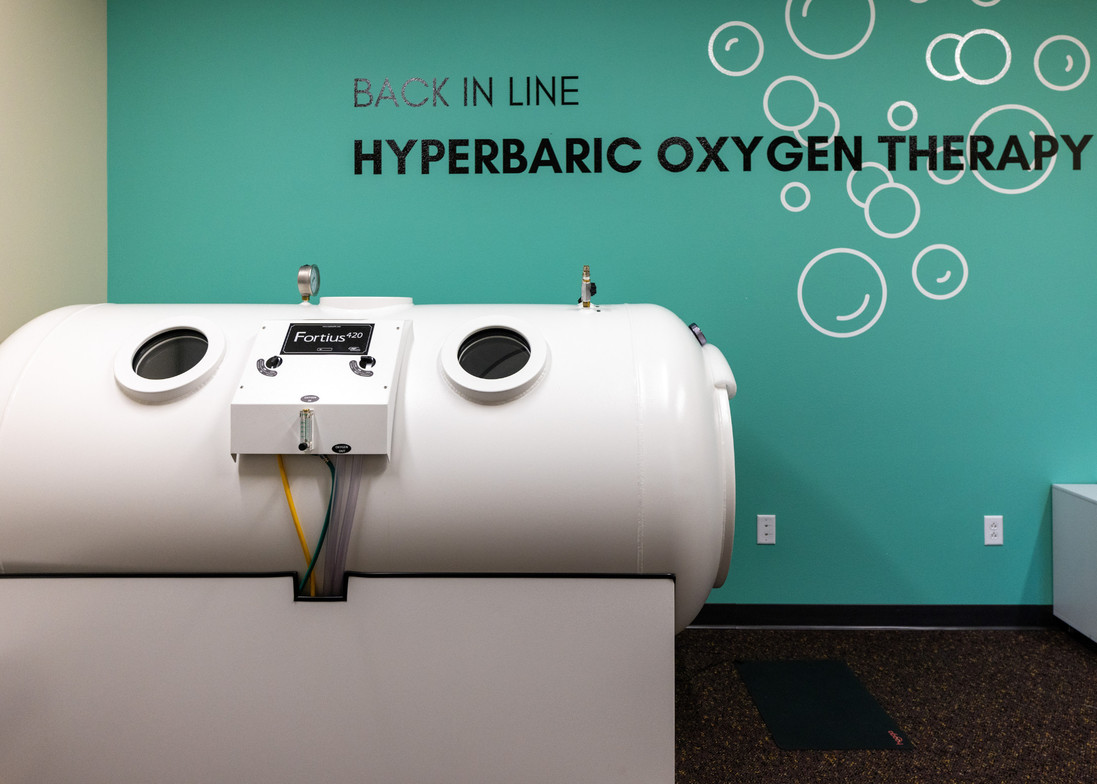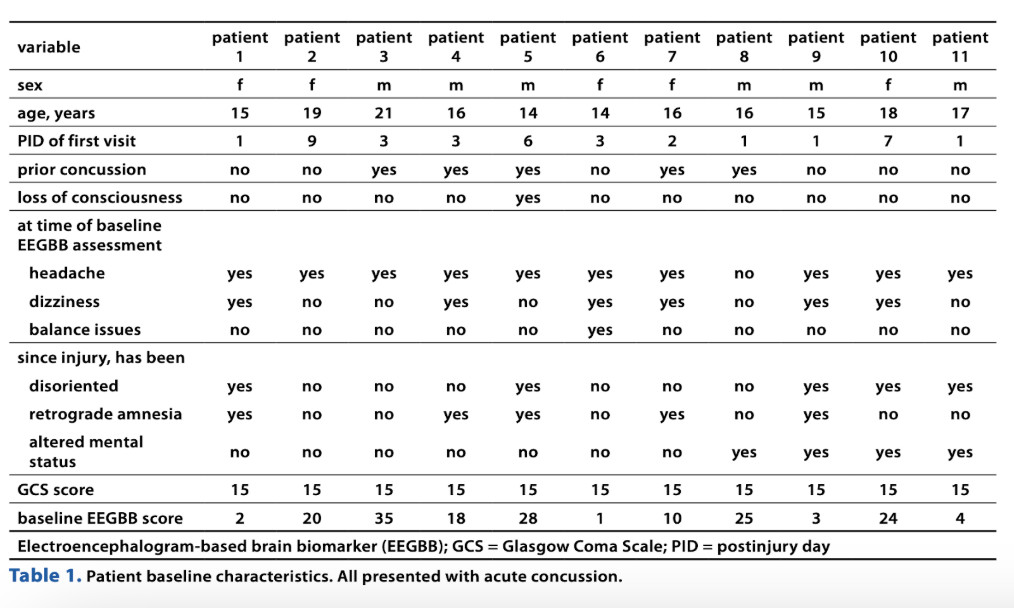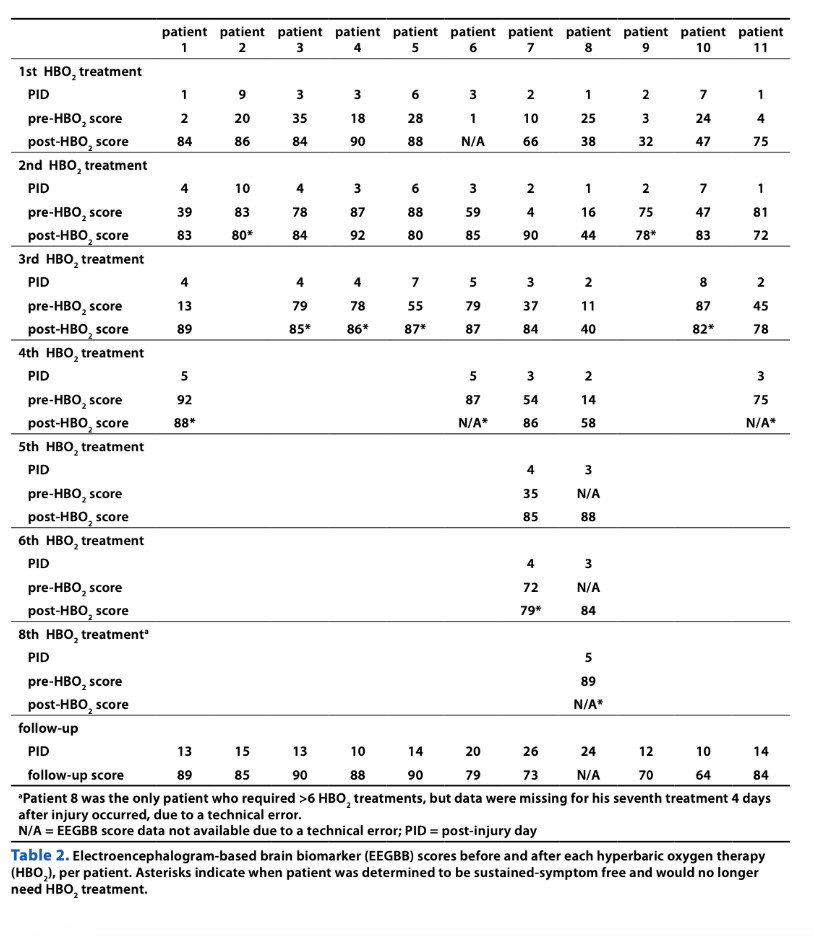
This study's hypothesis? That Hyperbaric Oxygen Therapy (HBOT) improves symptoms and resolves acute concussions symptoms in youths.
My name is Abby and I have been the Hyperbaric Technician at Back in Line for 2 years now. During this time I have seen and learned SO much about hyperbaric and the true healing power that it has. One area that I have gained the most interest in is regarding concussions. It is extremely common for kids and adults to have at least 1 concussion in their lifetime if they play a contact sport, have been in an accident, or just playing in gym class at school - I realized later in life that I’m pretty sure I got a concussion when I fell off a horse (I was wearing a helmet, thank goodness) but there is a small amount of time after coming off said horse that I don’t remember. Was I ever tested for a concussion? No. Did we follow a protocol of rest and relaxation? Maybe, I honestly can’t remember. Regardless, concussions are common and sometimes you might not even realize that you had one until years later.
I’m sure everybody knows what a concussion is, but do you know the actual definition? A concussion can be defined as “a bump, blow, or jolt to the head, or a hit to the body that causes the head and brain to move rapidly back and forth”. An acute concussion is a concussion that happens immediately after the traumatic event and symptoms of said concussion last for 1 week or more. These symptoms can be vast but typically patients experience headache, sensitivity to light, light headedness/dizziness, loss of consciousness, vomiting, slurred speech, or trouble walking. If you present to a doctors office with any of these symptoms, they may perform what is called the Glasgow Coma Scale. This is a standardized scale for concussion protocol to determine if the patient meets concussion criteria, and rate to what severity the concussion may be.
In a recent study done in Fargo, ND and Northbrook, IL, 11 patients (between the two locations) were studied in regards to their acute concussion caused by a sports injury. These patients were between the ages of 14 - 21 years old, 6 of the participants were male. All the patients in this study were 1-10 days post concussion day. This is very important to note because with Hyperbaric, the sooner that you are able to get in the chamber post concussion the better your outcome will be of a quicker recovery.
The part that separates this case study from others that I have read, is that they did what's called an Electroencephalogram-based brain biomarker (EEGBB) assessment on each patient before and after their Hyperbaric therapy sessions. Meaning, when the patients first presented to the office the staff placed electrodes on the patients head and got a map of their brain waves which allowed the staff to know if this was a severe or mild concussion based on the results. Anything that was categorized below 20 was a severe concussion. This table below shows more of the patient demographic information along with the Glasgow Coma Scale and their EEGBB score before they started hyperbaric sessions:

Now here is that same patient group but showing the before and after EEGBB scores when incorporated with Hyperbaric Therapy:

What I find incredibly interesting is that even after one session, you can see results in the patient's brain based on the EEGBB scores. Take a look at Patient 1 for example; their first HBOT session score was 2 (showing a severe concussion) but after HBOT their score was 84. Patient 2; 1st HBOT session score of 20 before, and a 86 after.
Each patient was asked to do 2 sessions a day with 4 hours break in between sessions, at 1.5-2.0 ATA’s for 70 minutes in a monoplace chamber. Depending on travel, some patients were not able to get 2 sessions in per day but this was the recommended protocol. It does not specify in this study if these patients were utilizing ambient air, concentrated oxygen, or 100% oxygen via mask or cannula during their sessions. When talking about the brain specifically, our office would prefer that 100% oxygen be utilized for sessions via a mask or cannula because we want the brain to get as much oxygen as it can (safely) to aid with healing. Concussions cause an “energy crisis” meaning that blood flow is decreased for a number of days after injury. To help restore this blood flow, you need oxygen. Hyperbaric sessions, in general, cause vasoconstriction which constricts the blood vessels but allows for more blood cells to travel through your system vs during vasodilation when the blood is still flowing but at a slower rate through wider vessels. Imagine the blood cells are just wandering aimlessly around the aisle of Costco and taking their time shopping during vasodilation but during vasoconstriction the blood cells are on a mission to get in and get out. That’s basically what is happening.
Each of these patients were able to get into the chamber 1-10 days post concussion. As mentioned before, these patients were told to do 2 sessions a day and were told to do such a pattern until they reported being symptom free and staying symptom free. Each patient was asked to come back and perform a follow-up EEGBB a number of days after their last HBOT session to confirm they are still showing elevated scores (see bar graphs on page 7 of this PDF) that align with staying symptom free. Some patients were able to achieve this after 1 day, some were 3 days, and only one patient required 8 days of treatment before being able to maintain symptom free. It is also important to note that most of these individuals had previous history of concussions, making them more susceptible to additional concussions.
I could go on and on about this for hours but the key thing to note; This study was able to prove their hypothesis via gathered data that Hyperbaric therapy resolves acute concussions when applied to youths within 10 days of injury.
That’s incredible! Concussions are vastly underserved in terms of recovery and the “rest protocol” doesn’t have enough evidence behind it to confirm it’s an adequate protocol for recovery. In fact, most student athletes will not rest for long enough and go back to their activities far too soon after a concussion, leading to a delay in healing and recovery.
Not only do we strongly recommend HBOT for concussion care but we also want to make sure we are supporting the body through Chiropractic care and supplementation. Dr. Calla also recommends taking a minimum of 3 grams Omega 3 for an acute concussion and 8 or more grams of Omega 3 if it is a significant concussion. The reason for this? We love your brain and want to make sure that it stays healthy, is being supported, and heals well post concussion.
Okay, I am done rambling about Hyperbaric. If you are interested in learning more, have previously had a concussion, or have a kiddo who is in contact sports, you can always contact our office at (319) 892-3363 and set up an initial consultation to discuss all things hyperbaric and/or chiropractic care. If you are interested in reading more about this recent study, we have added a copy to our website, but you can also click here to view the PDF version.
Stay well!
References:





